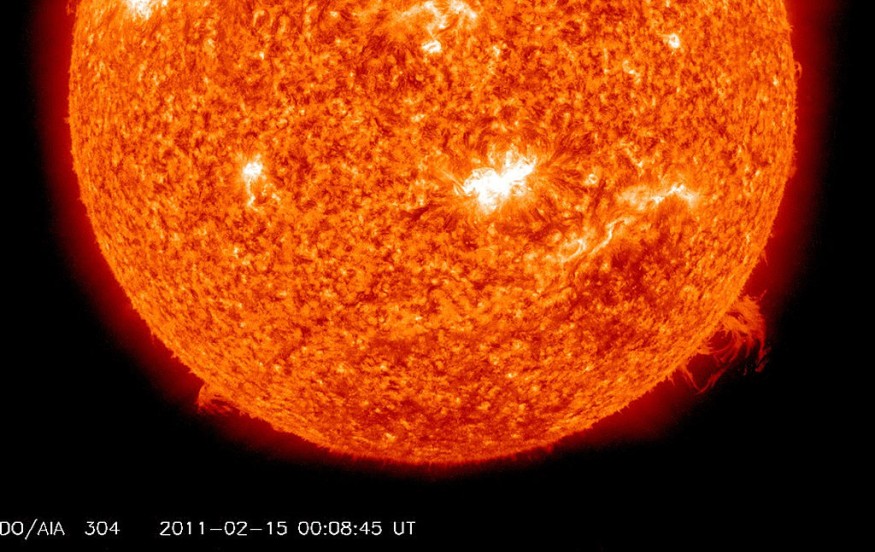Experts warned that a G1 geomagnetic storm would develop between July 20 and 22 due to solar winds brought on by two recently discovered holes in the sun's corona.
According to Newsweek, space weather specialists expect the weakest type of solar storm on the scale, which goes from G1 to G5.

However, space weather expert Dr. Tamitha Skov speculated in a new social media post that the solar flare might be more potent than everyone thought.
"The magnetic orientation of this Earth-directed #solarstorm is going to [be] tough to predict. G2-level (possibly G3) conditions may occur if the magnetic field of this storm is oriented southward!" Skov tweeted.
The long snake-like filament cartwheeled its way off the #Sun in a stunning ballet. The magnetic orientation of this Earth-directed #solarstorm is going to tough to predict. G2-level (possibly G3) conditions may occur if the magnetic field of this storm is oriented southward! pic.twitter.com/SNAZGMmqzi
— Dr. Tamitha Skov (@TamithaSkov) July 16, 2022
Strong Solar Storm to Hit Earth Again
Over the past week, there have been several flares of moderate intensity. One of them was followed by an impressive expulsion on July 15. But this time, The Conversation said the solar storm is going straight for Earth by July 21.
These forecasts are based on mathematical models developed by astronomers after analyzing decades' worth of solar data. However, Interesting Engineering said these techniques are not perfect, and actual solar weather may differ from those forecasts.
A solar flare frequently comes before a powerful event. The same magnetic field that caused the flare to bend under the sun's surface, pulling massive amounts of solar plasma out of it and shooting it into space like a cannon. We refer to this as a coronal mass ejection.
Coronal mass ejections are formed of charged particles that move more slowly than the radiation from flares, which travels to Earth in roughly eight minutes at the speed of light. The time it takes for them to get to the Earth's orbit might range from a few hours to many days.
ALSO READ : Northern Lights Are Dancing in Northern US as NOAA Warns About Solar Storm Hitting Earth Again This Week
This is not the first time we have encountered this issue. Experts pointed out that these events are primarily magnetic, despite their mechanics not yet completely understood. The occurrence is not accidental too. The sun undergoes solar maxima, which are times of extremely high magnetic activity, around every 11 years.
These peaks have a very high frequency of these occurrences. And the current cycle, which is predicted to peak in 2024, is already hitting its apex.
Solar Storm Explained
Marca pointed out that solar storms can have disastrous effects, at least for a few hours.
The loss of GPS systems, radio communications, and satellites orbiting our globe are just a few of the potential impacts. However, no alerts have been issued by the Space Weather Prediction Center (SWPC).
Solar storms are distinguished by their various levels, ranging from one to five (G1-G5), with the last being the strongest.
Experts think this would likely happen for just a few hours or days, but if catastrophic, it might shut down the internet for months.
AS mentioned that interference in the transmission of radio waves may occur due to solar radiation that geomagnetic storms create.
In other words, a powerful solar storm with these features may, in the worst situation, take down our whole communications system.
RELATED ARTICLE : Solar Flare Results In Geomagnetic Storm That May Cause Power Grid Disruption, Railway Collisions on Earth
Check out more news and information on Space in Science Times.
© 2025 ScienceTimes.com All rights reserved. Do not reproduce without permission. The window to the world of Science Times.












